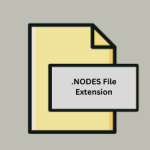.LSO File Extension

Logic Audio Project
| Developer | Apple |
| Popularity | |
| Category | Audio Files |
| Format | .LSO |
| Cross Platform | Update Soon |
What is an LSO file?
The .LSO file extension, often associated with Logic Audio by Apple, represents a file format primarily used in the realm of digital audio workstations (DAWs).
These files are known for storing audio data, but they encompass more than just sound. LSO files retain a comprehensive snapshot of the project, including the audio data, MIDI sequences, effects, and other settings crucial for music production.
This format is especially popular among professionals in music production, sound engineering, and related fields due to its robust feature set and integration with Logic Pro, a leading software in the industry.
More Information.
The history of the .LSO file extension is inherently tied to the evolution of Logic Pro. Originally, Logic Pro was designed to cater to the needs of music professionals requiring advanced tools for composition, editing, and mixing.
The LSO file format was conceived to serve these purposes by providing a container that encapsulates not just the audio but also the intricate details of a project, such as plugins used, virtual instruments settings, and track information.
This comprehensive approach ensured that users could reopen their projects exactly as they left them, a crucial feature in professional music production.
Origin Of This File.
The .LSO file extension has its roots in the development of Logic Pro, a software initially created by the German company Emagic. Apple Inc. acquired Emagic in 2002, and since then, Logic Pro has evolved, becoming a staple in the music production industry.
The LSO file format was introduced as a proprietary format for Logic Pro, designed to optimize the workflow within the software and ensure a seamless experience for users handling complex audio projects.
File Structure Technical Specification.
An .LSO file is structured to store various types of data efficiently. It contains raw audio data, MIDI information, references to external audio files, and metadata describing the project settings.
The file is organized in a way that allows Logic Pro to quickly access and process the data, ensuring smooth playback and editing even in complex projects with numerous tracks and effects.
The technical specification of the LSO file format is proprietary, closely tied to the architecture of Logic Pro, and optimized for performance on macOS, the operating system for which Logic Pro is exclusively developed.
How to Convert the File?
Converting an .LSO file, which is typically associated with Logic Pro, essentially involves exporting or bouncing the project to a more universally recognized audio format such as WAV or AIFF. Here’s how you can do it:
Step 1: Open the .LSO File in Logic Pro:
- Launch Logic Pro: Start the application on your Mac.
- Open the Project: Go to
File > Openor simply pressCommand + O, and navigate to your .LSO file to open it.
Step 2: Prepare Your Project for Export:
- Finalize the Mix: Make any final adjustments to your mix. Ensure that all levels, effects, and pan settings are as you want them to be.
- Check Track Activation: Ensure all tracks you want to include are active and not muted.
- Set the Loop/Region: If you only want to bounce a specific part of your project, set the loop or region markers accordingly.
Step 3: Bounce the Project (Export):
- Access the Bounce Feature: Go to
File > Bounce > Project or Section. This will open the bounce dialog box. - Choose Bounce Settings: Select the appropriate settings for your needs. Here’s what you typically choose:
- Destination: Choose if you want to bounce out a PCM file (like WAV or AIFF), an MP3 file, or both.
- File Format: Choose WAV, AIFF, or MP3. WAV and AIFF are lossless formats, while MP3 is lossy but more compressed and widely used.
- Resolution and Sample Rate: Choose based on your requirements. CD quality, for instance, is 16-bit resolution at 44.1 kHz.
- File Type: Choose interleaved if you want a stereo file or split if you want separate files for left and right channels.
- Bounce in Real Time or Offline: You can choose to bounce in real time (which is necessary if you use certain external effects) or offline (which is faster).
- Name and Save the File: Click on the bounce button, name your file, choose a location to save it, and then save.
Step 4: Converting MIDI to Audio (If Needed):
If your project includes MIDI tracks, they need to be converted to audio before bouncing. This typically involves:
- Assigning a Virtual Instrument: Ensure that each MIDI track is assigned to a virtual instrument.
- Recording the Output: You may need to record the output of the virtual instruments onto audio tracks.
Step 5: Post-Conversion Steps:
- Locate the File: Navigate to the folder where you saved the file.
- Verification: It’s a good practice to listen to the bounced file to ensure the export went as expected.
Advantages And Disadvantages.
The .LSO file format comes with its set of advantages and disadvantages. On the plus side, its integration with Logic Pro offers a seamless and efficient workflow for users of the software.
The format’s ability to store comprehensive project data ensures that no detail is lost when reopening or sharing projects. The proprietary nature of the LSO format means that it lacks compatibility with other DAWs.
This can be a significant disadvantage for users who work in environments where multiple software solutions are used. The complexity of the format can make it challenging to recover data if the file becomes corrupted.
How to Open LSO?
Open In Windows
- Direct Opening: There’s no direct way to open an .LSO file in Windows since Logic Pro is not available for this OS.
- Alternative Approach: Convert the .LSO file to a universally recognized format (like WAV or AIFF) using Logic Pro on a Mac. Then, the converted file can be easily opened with various audio software in Windows.
Open In Linux
- Direct Opening: Similar to Windows, Linux does not natively support .LSO files, and there’s no version of Logic Pro for Linux.
- Alternative Approach: After converting the .LSO file to a format like WAV or AIFF on a Mac, you can use audio software available for Linux (like Audacity) to open the file.
Open In MAC
- Direct Opening: macOS is the native environment for .LSO files. You can open them directly with Logic Pro. Just double-click the file or open Logic Pro and navigate to
File > Opento access your project.
Open In Android
- Direct Opening: Android does not support .LSO files natively, and there’s no version of Logic Pro for Android.
- Alternative Approach: Convert the .LSO file to a more compatible format like MP3, WAV, or AIFF. Then, you can play the audio on Android using any standard music player.
Open In IOS
- Direct Opening: While iOS is an Apple operating system, it doesn’t support .LSO files natively as Logic Pro is not available for iOS devices.
- Alternative Approach: Use Logic Pro on a Mac to convert the .LSO file to a format like MP3, WAV, or AIFF. Then, use iTunes or iCloud to transfer and play the file on your iOS device with a music player app.
Open in Others
- Direct Opening: Most other operating systems do not support .LSO files directly.
- Alternative Approach: Convert the .LSO file to a universally recognized audio format like MP3, WAV, or AIFF on a Mac. Then, depending on the device, you can transfer and play the file using compatible media playback software or apps.













